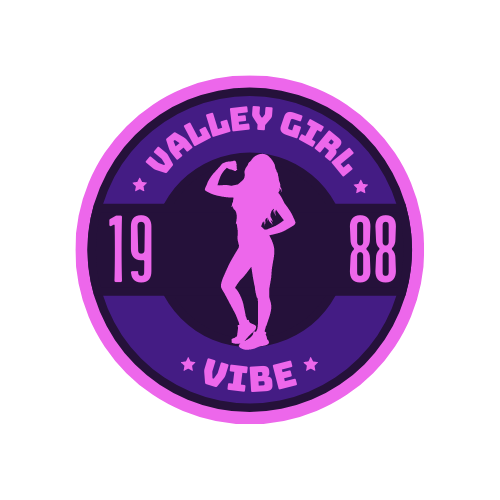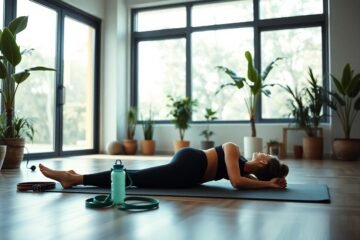Home treatment for a 3rd degree sunburn requires immediate attention and understanding of its severity. You will learn how to identify the symptoms, including skin discoloration and severe pain, which indicate deeper tissue damage. Additionally, you can apply effective at-home remedies to manage pain and support healing, but it’s necessary to recognize when to seek professional medical help. This guide aims to equip you with the necessary knowledge to handle this painful situation quickly and effectively.
Understanding 3rd Degree Sunburn
Before suffering from a 3rd degree sunburn, it’s imperative to understand its severity and implications. This type of burn penetrates deep into the skin, causing significant damage and loss of tissue. It can lead to complications if not treated properly, and sometimes may even require medical intervention. Distinguishing this level of sunburn from milder degrees is important for effective home care and recovery.
Symptoms to Recognize
Any signs of 3rd degree sunburn should alert you to the danger it poses. Symptoms include:
- Severe redness and swelling
- Pain that may be less than anticipated due to nerve damage
- The skin may appear blistered or leathery
- Peeling or dry skin may occur later
Being aware of these symptoms allows you to assess the damage and seek appropriate care if needed.
Factors Contributing to Severity
To understand how severe your 3rd degree sunburn may be, you must recognize the factors that contribute to its intensity. These include:
- Skin type: Fair-skinned individuals are more susceptible
- Duration of exposure: Longer sun exposure increases the risk
- Time of day: UV rays are strongest between 10 AM and 4 PM
- Altitude: Higher altitudes can intensify sun rays
Recognizing these factors helps you evaluate your condition and take appropriate actions.
Severity can also be influenced by your previous sun exposure and history of sunburns. If you’ve experienced multiple sunburns, your skin may be more sensitive and prone to damage. Additionally, medications or underlying skin conditions may make your skin more vulnerable. It’s vital to consider all factors that may affect your skin’s response to the sun. Recognizing these elements will empower you to take preventative measures in the future.
Immediate First Aid Measures
Some immediate first aid measures are necessary for managing a 3rd degree sunburn. Start by consulting a healthcare professional to get personalized advice and treatment options. You can find valuable information on How to Treat a Sunburn, which may help you understand the necessary steps to take in case of severe sunburn.
Cooling the Affected Area
If you experience severe sunburn, it’s vital to cool the affected area to reduce discomfort. Apply a cool, damp cloth to the burned skin or take a cool bath. Avoid ice or very cold water, as this may cause further damage to your skin.
Protecting the Skin
For effective skin protection following a severe sunburn, ensure you keep the affected area covered. Use soft, loose clothing to shield your skin from additional sunlight exposure, and avoid any restrictive materials that may cause irritation.
Another key aspect of protecting your skin is applying a gentle, fragrance-free moisturizer or aloe vera gel to promote healing and combat dryness. Keeping your skin hydrated enhances recovery while preventing further irritation. Additionally, stay out of the sun until your skin has healed fully, as exposure can lead to serious complications and increase your risk of long-term damage, including skin cancer.
Home Treatment Options
If you are dealing with a 3rd degree sunburn, it is important to take immediate home treatment actions to alleviate discomfort and support the healing process. Focus on keeping the affected area clean, protected, and moist. Utilize cool compresses and be sure to drink plenty of fluids to stay hydrated. Avoid any products containing alcohol, which can further irritate your skin and delay healing.
Moisten and Soothe
Little things can make a big difference in your comfort. Use a gentle, fragrance-free moisturizer or aloe vera gel to keep the sunburned skin hydrated. Applying these soothing agents can help alleviate the burning sensation and reduce dryness, facilitating your skin’s natural healing process while preventing further irritation.
Promoting Healing with Natural Remedies
There’s a variety of natural remedies that can assist in promoting healing for your sunburn. Options like calendula oil, coconut oil, and honey have been known to possess anti-inflammatory and healing properties. Incorporating these remedies may provide relief from pain and support the recovery of your skin. However, be cautious of any allergies and discontinue use if irritation occurs.
To maximize the benefits of natural remedies, apply them consistently to the affected area, focusing on gentle application to avoid further damaging your skin. Combining these remedies with proper hydration and rest will create a supportive environment for your skin to heal effectively. Ensuring that you do not expose your sunburned skin to direct sunlight is vital, as this can worsen your condition and lead to more serious complications.
When to Seek Medical Attention
Once again, it is important to emphasize that if you suspect a Third-Degree Burn | – Symptoms & Causes or experience severe symptoms, you should seek medical help immediately. Signs such as increasing pain, swelling, high fever, or any signs of infection warrant professional evaluation to ensure appropriate treatment and prevent complications.
Signs of Complications
The signs of complications can include increased redness, oozing, or pus at the burn site. You may also notice fever, chills, or an unusual increase in pain, which can signal an infection or other serious issues that require immediate medical attention.
Importance of Professional Care
For optimal recovery, seeking professional care is vital. A healthcare provider can assess the extent of your burn and provide treatments that promote healing and minimize risks.
Seek medical help promptly if your burn shows symptoms of infection or if you have serious concerns about the healing process. A medical professional can help prevent complications, manage pain effectively, and ensure proper treatment to enhance healing. Your long-term health and recovery depend on the appropriate care you receive right from the start.
Preventive Measures for Future Sunburns
Now that you understand how to treat a 3rd degree sunburn, it’s important to focus on preventive measures to avoid future damage. Being proactive can protect your skin and enhance your outdoor experiences. Always apply sunscreen, seek shade during peak hours, and wear protective clothing to shield your skin from harmful UV rays.
Tips for Safe Sun Exposure
Clearly, safe sun exposure is key to maintaining healthy skin and preventing sunburn. Here are some tips to ensure you enjoy the sun responsibly:
- Apply broad-spectrum sunscreen with SPF 30 or higher.
- Reapply sunscreen every two hours, or more frequently after swimming.
- Wear a hat and UV-blocking sunglasses for added protection.
- Stay in the shade whenever possible, especially between 10 AM and 4 PM.
- Stay hydrated to help maintain healthy skin.
Knowing the right practices can greatly minimize your risk of sunburn.
Choosing the Right Sunscreen
Clearly, selecting the right sunscreen is important for effective protection against sun damage. Look for a broad-spectrum formula that guards against both UVA and UVB rays, and choose an SPF of at least 30. You should also consider your skin type; for oily skin, opt for a gel or spray, while cream formulations suit drier skin types. Don’t forget to check for water resistance if you’ll be swimming or sweating, as this affects the longevity of your protection.
Future applications in the sun should always involve proper sunscreen selection to ensure your skin receives the best shield possible. Applying the right product can prevent painful and damaging sunburns. It’s important to choose one that offers maximum protection and is water-resistant for effective outcomes. Prioritize products with natural ingredients if you have sensitive skin to minimize irritation, ensuring you’re safe while enjoying the outdoors.
Lifestyle Adjustments for Healing
After experiencing a 3rd degree sunburn, it’s imperative to make certain lifestyle adjustments to promote optimal healing. Prioritize avoiding further sun exposure by wearing protective clothing and staying indoors during peak sunlight hours. Your body needs all the support it can get, so limiting strenuous activities will help you recover more effectively. By creating a calm, healing environment, you can significantly enhance your recovery process.
Nutrition and Hydration
For effective healing, focus on nourishing your body with high-quality nutrients and staying adequately hydrated. Incorporate foods rich in antioxidants, vitamins A, C, and E, and omega-3 fatty acids into your diet to support skin repair. Additionally, drink plenty of water to maintain hydration, as it plays a vital role in the healing process.
Rest and Recovery
Recovery is imperative after undergoing a severe sunburn, as your body needs time to heal. Prioritize getting enough sleep each night, as this is when your body performs most of its repair work. Additionally, consider incorporating stress-reducing activities like gentle yoga or meditation to promote emotional well-being during your healing process.
Another important aspect of recovery is giving your body the chance to rest without interruption. Allow yourself to take breaks throughout the day, minimizing activity that could exacerbate your discomfort. This means avoiding high-energy workouts or strenuous activities until you’re well on your way to recovery. Focus on quality sleep, as this helps your body heal and regenerates damaged skin. Consider using soothing techniques like cool baths or gentle lotions to alleviate any discomfort, ensuring that your focus remains on healing effectively.
Conclusion
Ultimately, identifying and treating a 3rd degree sunburn at home requires careful attention to your symptoms and proper care. Always prioritize seeking professional medical assistance for severe burns, as home remedies may not suffice. In the meantime, focus on staying hydrated, covering the affected area, and avoiding further sun exposure. For comprehensive information and guidance, you can refer to 3rd-Degree Burn: What It Is, Treatment & Healing to ensure effective healing and recovery.
FAQ
Q: How can I identify a 3rd degree sunburn?
A: A 3rd degree sunburn is characterized by severe skin damage that can penetrate into deeper layers. Common signs include intense redness, swelling, and blistering of the skin. The affected area may feel numb due to nerve damage, and there can be a loss of skin integrity, such as peeling or an absence of a protective layer. If the pain is minimal or absent, this can indicate a more serious burn. It’s important to seek medical attention for proper evaluation if you suspect 3rd degree burns.
Q: What home treatments can I use for a 3rd degree sunburn?
A: Treating a 3rd degree sunburn at home requires caution. Initially, you should keep the affected area clean and avoid any additional sun exposure. Applying cool, damp cloths may help alleviate discomfort. Over-the-counter pain relievers, like ibuprofen or acetaminophen, can manage pain. However, it’s advisable to avoid creams or lotions that are oil-based, as these may trap heat in the skin. Always cover the area with a sterile, non-stick dressing and consult with a healthcare provider for further treatments or if blisters develop.
Q: When should I seek professional medical treatment for a 3rd degree sunburn?
A: If you suspect a 3rd degree sunburn, it is important to seek professional medical treatment immediately. You should visit a healthcare provider if you experience symptoms such as extensive blistering, severe swelling, or signs of infection such as increased redness, warmth, or pus. Other indications for urgent care include fever, significant pain that is not relieved by over-the-counter medications, or any difficulty in moving the affected area. A medical professional can provide comprehensive treatment options and ensure proper healing.





